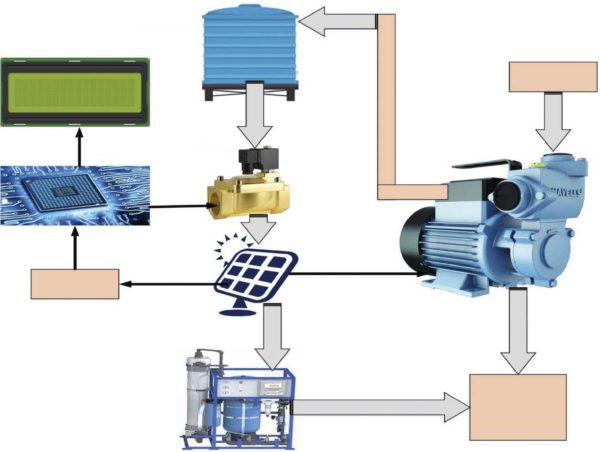A group of researchers from the PSG College of Technology in India and the University of Sheffield in the United Kingdom has developed a spraying water system to reduce the operating temperature of photovoltaic modules.
The active cooling system, which consists of a water tank and a spraying unit made with flexible PVC tubes with appropriate holes for water flow, is designed to spray water onto the module front surface.
The system is activated by a temperature sensor fixed on the back of the solar module that is connected to a microcontroller producing a pulse width modulation (PWM) signal. This signal, in turn, triggers a Mosfet acting as a switch between the system's solenoid valve, which is placed between the water tank and the spraying unit, and the power supply.
The system was tested on a 36 W solar module and its performance was compared to that of a reference panel without the cooling technique. “This PV module has already completed a lifetime of 10 years,” the scientists specified. “It is tested with and without water spraying throughout the day at regular time intervals.”

Image: Mathematical Problems in Engineering, Hindawi, Creative Commons License CC BY 4.0, https://bit.ly/3rqig8s
The experiment showed that the module's voltage and current values varied with respect to solar radiation after water spraying. “The voltage increases with the increase in solar radiation unless the temperature exceeds 45 degrees Celsius,” the academics emphasized. “The current increases gradually with a rise in solar radiation, and there are small changes with the increase in temperature, which is negligible when compared with the voltage variation.”
According to them, spraying water over the panels increased the voltage at higher temperatures, while the current dropped slightly. The voltage increase was between 1.5 V to 2.0 V and the current varied from 0.01 A to 0.03 A.
Through the cooling system, the scientists achieved a maximum module temperature decrease of 20 degrees Celsius and an average temperature decrease of 10 degrees Celsius. They also reported an average increase of 0.5% for the panel's power yield and a maximum increase of 1.0%.
The research group sprayed around 15.6 liters/day of water over the modules at temperatures beyond 45 degrees Celsius, which in turn raised the water temperature to an average of 30 degrees Celsius. “The water with increased temperature is fed into the solar water heating system, which improves the water heating system performance,” they emphasized. “In the future, the proposed methodology can be used for the domestic PV power system with an integrated water heating system.”
The system was presented in the paper Design and Implementation of Automatic Water Spraying System for Solar Photovoltaic Module, published in Mathematical Problems in Engineering.
This content is protected by copyright and may not be reused. If you want to cooperate with us and would like to reuse some of our content, please contact: editors@pv-magazine.com.




Someone got a paper published out of this “study”?
Liquid cooling of PV panels had been known about for decades.
This negligible performance increase far from offsets the resulting maintenance headaches and costs. Pumps, valves, temp sensors… And they don’t even mention the need for demineralization of the sprayed water, which would be required to avoid scale buildup. And periodic removal of algae from the panels.
Generally, you’d want to use enclosed cooling channels on the back of the panels, instead of spraying on the front surface.
Absurd.
It was an interesting research. I have a question. Humidity degrades the power production of solar panels. How it comes spraying water is helpfull here?